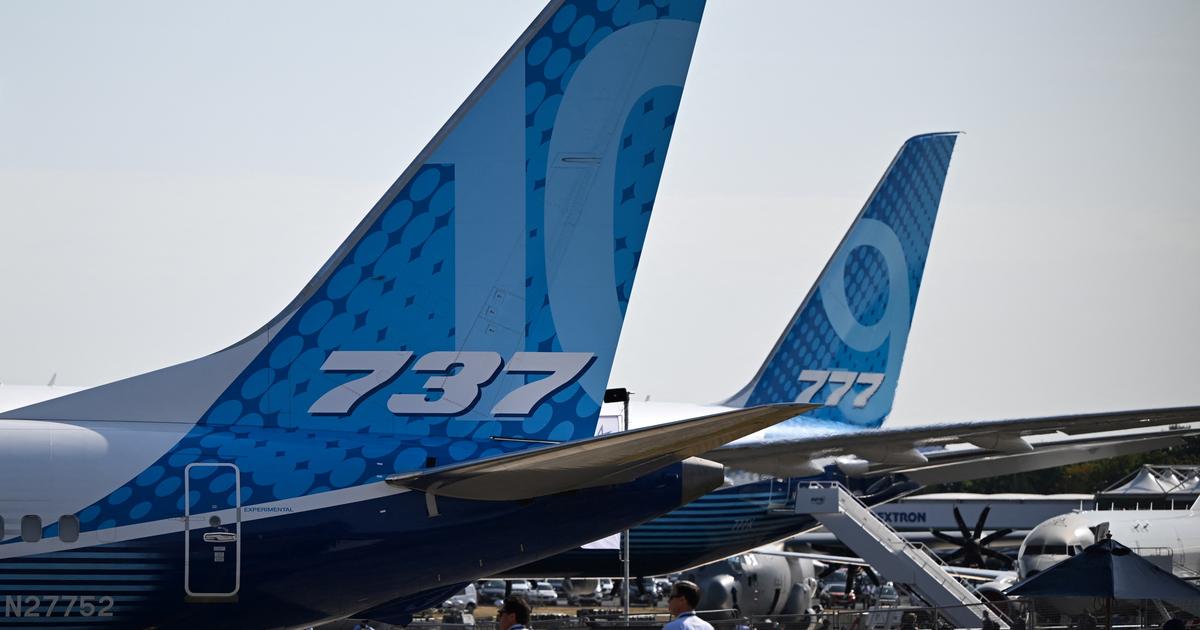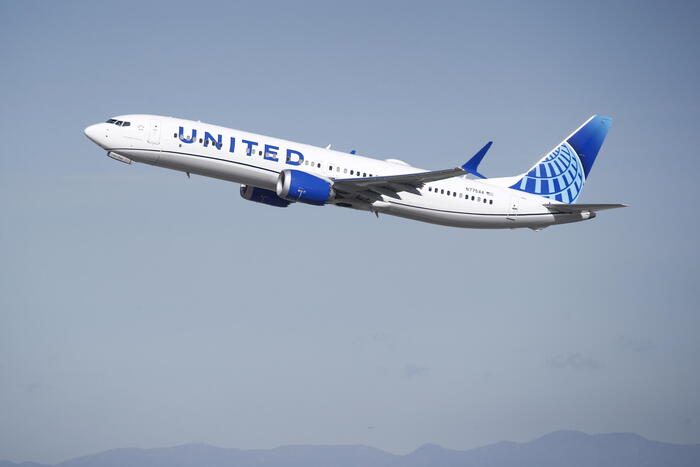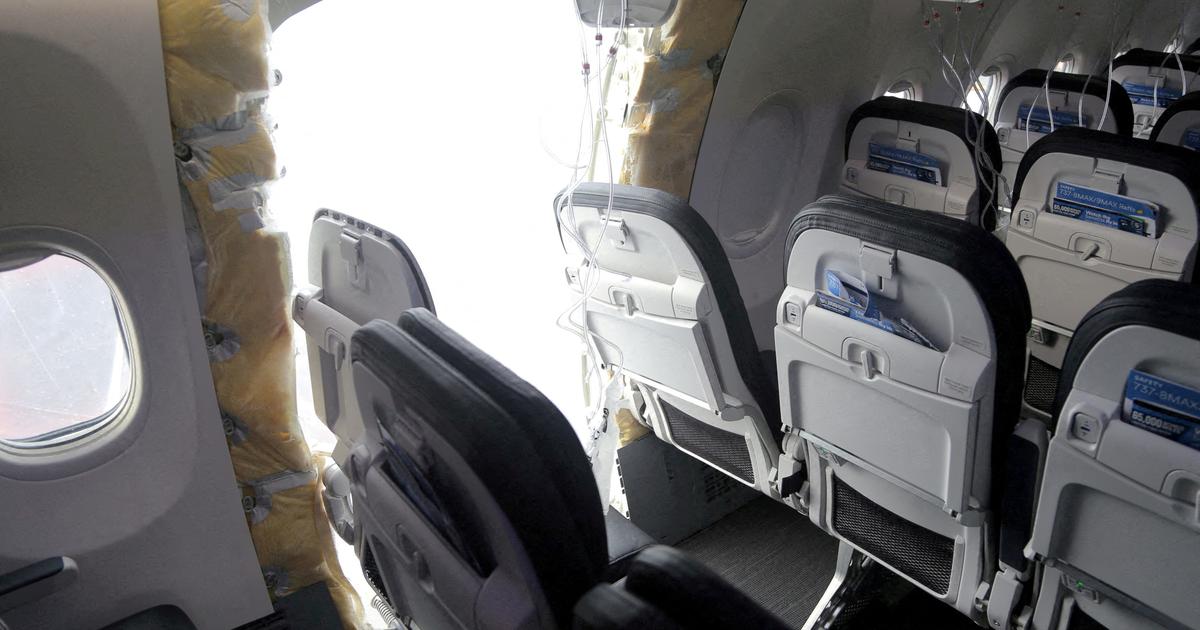Boeing 787 before its first flight, 2009.
Photo: Paul Joseph Brown / AFP
Frankfurt Airport, Monday, August 24th.
At 10:50 am, an almost brand new United Airlines plane takes off from the tarmac;
eight hours later the Boeing 787 touched down safely in Newark.
Since then, the plane has been on the ground, because the fact that flight UA 961 brought the passengers safely to New York City was obviously by no means a given.
One day later, Boeing shut down the plane head over heels.
Engineers at the manufacturer are concerned that this aircraft could have several production defects in the rear fuselage section at the same time.
In the worst case, there is obviously a risk of it bursting in the air because the machine cannot withstand the structural loads of normal flight well.
Because of "Dreamliner"
Boeing has withdrawn seven more "Dreamliners" due to acute safety concerns.
They were built in 2019;
Until recently, they were still in use with Singapore Airlines, Air Canada, Etihad Airways and Norwegian.
All of them should now be examined extensively.
For the aircraft manufacturer, which was once highly respected worldwide, things get rock-solid.
His bestseller - the Boeing 737 Max - has been on the ground for a year and a half after two crashes with 346 deaths around the world, because parts of it are a life-threatening faulty design.
Now there are increasing indications that the successful 787 long-haul jet also has significantly more quality problems than previously known.
The US aviation authority FAA has now launched another official investigation against the manufacturer.
So far, there are apparently no more shutdowns because only very few aircraft are affected by two deficiencies at the same time.
The FAA may now order urgent inspections of almost all 787 machines - that would affect around 1000 units that have been built since they went into service in 2011.
Horizontal stabilizer with material fatigue
On Tuesday, Boeing admitted another serious shortcoming that the company had known about since February.
In 893 models of the 787, there is premature material fatigue in the area of the horizontal stabilizer.
All affected machines are apparently still young enough that the material defect should not initially have any safety-relevant effects.
With new aircraft, Boeing wants to fix the problem before delivery, which means that the company will be able to hand over fewer aircraft to its customers this year than planned.
Boeing's turnover - massively shrunk due to the corona crisis and the 737 Max debacle - continues to shrink.
In particular, the Boeing plant in the US state of South Carolina, which opened in 2009, keeps attracting attention because of massive quality problems.
Waste and forgotten tools were discovered in machines built here, for example in the wings or in sensitive regions below the cockpit.
The major customer Qatar Airways, the "New York Times" reported last year, has decided, because of the many shortcomings, to only accept aircraft from the main plant in Everett, Washington state.
One reason for the many production errors: Managers in a hurry have gladly pushed the concerns of their engineers and auditors aside and put them under pressure to forego more security measures.
Many of these technicians have reached out to the FAA and the media with complaints.
Millions in fines for Boeing
In the meantime, the FAA has fined Boeing several million euros - but whether that is enough to change the obviously battered safety culture in this company remains doubtful.
In recent years, Boeing has been responsible for a lot of botch-up in the entire manufacturing process of its aircraft, from design to approval to production.
The hopes of the CEOs are now on the re-registration of the 737 Max, which could actually be imminent.
The FAA has completed its test flights with the modified machine.
Since this week, pilots from the European aviation safety authority EASA have been testing the aircraft from Vancouver, Canada.
Boeing has improved some technical systems on it, which was urgently needed.
So far, a single sensor on the outer skin has determined whether the aircraft is threatened with a dangerous, too steep flight position.
If so, a new type of automatic control software called MCAS (“Maneuvering Characteristics Augmentation System”) should intervene and automatically lower the nose.
If this one sensor is broken, MCAS will not work properly either and will force a change in the flight path directly towards the ground.
This was one of the reasons for the two 737 Max crashes in Indonesia and Ethiopia.
From now on, both of the existing sensors are involved in determining the flight attitude, one to the left of the fuselage and one to the right.
This is a gain in safety, but EASA experts had urged that three sensors should be used.
If one value is very different, the system should base its measurement on the other two.
Ethiopian Airlines Flight 302 crash site, March 11, 2019
Photo: Mulugeta Ayene / dpa
Implementing this requirement would, however, entail extensive changes and set Boeing back months or even years.
EASA now seems to be accepting a compromise, according to which Boeing will only develop an auxiliary system in the future that controls the performance of the two sensors.
Until then, new cockpit procedures should ensure sufficient security.
When does the flight ban for the 737 Max fall?
The 737 Max could fly again in the USA in November, in Europe and large parts of the world the flight ban is likely to be lifted a little later.
Everywhere, however, existing 737 pilots will have to be specially trained in the simulator for the 737 Max.
Boeing had originally insisted that there should be almost no additional training.
The company advertised that there were hardly any training costs in this machine - and apparently accepted that poorly trained pilots are also poorer pilots.
More than 450 machines of the type 737 Max are now crowded together at various US airports, waiting for their delivery.
Boeing still has a lot to do with them: The FAA has discovered another design flaw: the wiring in the fuselage must be changed in sections before the aircraft can be put into service.
And in some tanks of the 737 Max, technicians have also found forgotten tools and garbage from the production process.
Icon: The mirror















